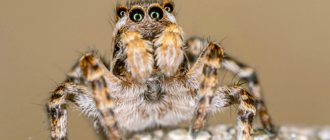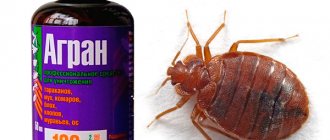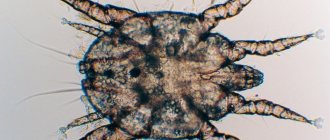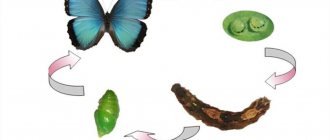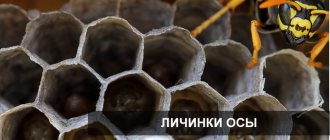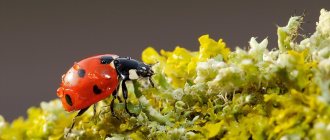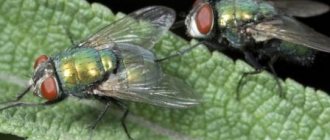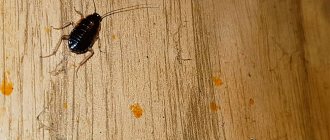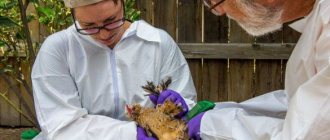What types of domestic rats are there?
Rodent species standards are set by many organizations around the world.
We will focus on the AFRMA Fancy Rats classification of the American Rat and Mouse Association. Rodents come in white, black, brown, gray and beige. There are more than 15 color options in total AFRMA Fancy Rats - Self. Sometimes spotted individuals are found. The eyes of animals can be black, ruby, or red. When determining a variety, these characteristics are usually not taken into account. Experts look at the shape of the ears, the structure of the tail, and the presence and type of fur.
There are seven varieties of AFRMA Fancy Rats in total.
Rat standard
The animal's fur AFRMA Fancy Rats - Varieties tightly covers the body and shines. It should be short and smooth. Males have slightly longer and stiffer hairs than females.
Photo: alexeisido/Shutterstock
Rex rat
This species has curly hairs on its body. The coat should be thick and soft. Curly whiskers are normal for these rodents.
Photo: Colin Seddon/Shutterstock
Tailless rat
Such animals can have any color and coat structure. The main feature is the absence of a tail.
Photo: George Dolgikh/Shutterstock
Sphinx
These rats are hairless. They have thin, almost transparent skin. It can be pink, gray or spotted. Normally, there are no scars or pimples on it, but wrinkles are allowed. The ears are large and smooth. The mustache is usually short and curly. Although they may not exist at all.
Photo: RaulRamirez/Shutterstock
Satin, or satin, rat
The fur of these animals is long, straight and fine. It may appear to be sparkling. The hair is pleasant to the touch. The mustache is usually wavy.
Photo: Sergey Bezgodov / Shutterstock
Dumbo Rat
A distinctive feature of the variety is its large round ears. They are set low on the sides of the head. But the wool can be any kind.
Photo: JLRphotography/Shutterstock
Bristle rat
These rodents have slightly wavy fur. With age she becomes rougher and straighter. It feels like a metal brush. The mustache can be straight or wavy at the tips.
Photo: Carlos Aranguiz/Shutterstock
Peculiarities
The white rat is a domesticated creature that has white fur. She is one of the most common and beloved pets today. The Chinese were the first to domesticate this animal; a little later, the white rat was brought to America and European countries, where it was crossed with an albino rat. The painstaking work of breeding scientists led to the emergence of the domestic white rat with red eyes.
This animal has no special differences from the traditional gray rat, except for the special color of its fur coat and eyes. These appearance features were a consequence of an insufficient amount of melanin in the blood. In fact, the white of the animal’s eye is transparent, and the veins of blood vessels that pierce the eye are colored red.
Sometimes you can find a defective albino, which is characterized by a gray shade of fur and dark eye color. It is this kind of animal that is better able to adapt to living at home. They are not afraid of daytime color, and also have strong immunity and protective reactions of the body. Albinos are not created on purpose, since their genes with a set of chromosomes are unique and spontaneous.
The color that rat offspring will have cannot be known in advance. So, one offspring may include representatives with white and gray colors. The white rat with red eyes is of medium size and weighs about 0.3–0.4 kg, but there are also individuals that weigh half a kilogram. The male is always larger than the female.
The pet's muzzle has an elongated and even pointed shape. In the front there are 4 teeth, which are quite long and sharp. Another feature of this animal is its unusual tail.
It may immediately seem that he is bald, but in fact the organ is covered with white fibers, which are almost invisible. The white rat is a very funny rodent that has its own habits and habits. That is why many people chose this animal as a pet.
What is the character of domestic rats?
Rodents are attached to their owners. They are recognized by their voice 5 reasons why you'd love a pet rat! and appearance. Animals enjoy Rat Personality, Intelligence, and Care when owners scratch them behind the ears, pet them, and massage their backs. At such moments, rats often begin to chatter their teeth. This means that the pet is happy. Some animals “look after” their owners: they lick and gently bite their hands.
When humans are not around, rodents need the company of their own kind. Animals enjoy playing together and cleaning each other.
It is better to keep rats in same-sex pairs Caring for your rat. Otherwise, they will often bear offspring: there are eight cubs in a litter.
Females are active and mischievous. They love to explore new places and run. Males are a little calmer. They can sit relaxed in their owner's arms while he watches TV.
Rodents are very smart. They quickly learn to call and perform simple Rats tricks! The Perfect Pet? . For example, jumping through a hoop or playing with a ball.
Remember: Rats sometimes bite Rats! The Perfect Pet? . This can happen if there are cubs in the home, a stranger has stuck a finger into the cage, the owner’s hands smell of food, or the animal is scared because it was suddenly picked up. Therefore, wash your hands before touching a rodent. Don't tease him with food. Be careful if there are babies in the cage. Try not to remove animals from their home too quickly. First, say something to the rat, pet it. If your pet is scared or injured, wrap it in a towel. Only then take him out of the cage. Hold your pet every day. Otherwise, it will lose the habit and stop trusting you.
Markings for this color
A husky rat can only be one of two available markings:
- Berkshire Husky.
- Banded Husky.
The Berkshire Husky is a coat type marking with a white belly and colored rat back. The head, like the back, is also colored.
Banded Husky is a "hood" type marking where the animal's head, chest and shoulders are evenly colored. The exception is Blaze. From the so-called hood, a strip of dyed wool runs along the back. In this marking, such a stripe is very wide.
What living conditions are required for decorative rats?
It is best to place the rat in a spacious wire cage Caring for your rat. Height - no less than 50 cm, minimum floor area - 50 × 80 cm. The flooring must be hard and even, for example plastic. The option with rods will not work: the animal may damage its paws.
Photo: borisenkoket/Shutterstock
There are several rules for placing a house. Rodents are susceptible to cold and heat. They feel best at a temperature of 20 degrees. Therefore, the cage is usually placed away from direct sunlight, radiators and drafts. If there are other animals in the house, then the home should be, for example, on the Rat: Species Profile nightstand or table.
A nipple drinker and bowls must be placed inside the cage. If desired, you can buy a tray and filler for rodents. The rat should also have a shelter: a hammock or a house.
Photo: Bilanol/Shutterstock
Rodents love toys very much. For entertainment, owners choose running wheels, tunnels, platforms and wooden figures. The latter should be changed regularly, otherwise the animal will get bored.
Rats like to make nests. Therefore, you can periodically put paper in the cage. Remember that newspaper sheets will not work. The ink can cause poisoning to your pet.
Double Rex breed
Representatives of this breed have double hair. The coat is so short that the skin is visible through it. The fur is twisted into a spiral. Soft downy and hard guard hairs are scattered throughout the body. Rats of this breed shed regularly. During molting, some areas of the body are temporarily without hair, or these areas are covered only with a thin layer of down. Coat color may vary. The mustache is short and curled.
Double Rexes have a double coat.
What to feed pet rats
These rodents are omnivores. What should I feed my pet rat? , but you still need to control their diet. The simplest food option is dry balanced food. These are sold in pet stores. Before purchasing, you should carefully study the composition. The protein content should be at least 16%, fat - 4-5%.
The diet can be varied with vegetables and fruits. Pears, apples, bananas, melons, broccoli, cabbage, carrots, celery and peas are considered safe.
Treats you can give your rat are grains, grains, seeds, bread, cookies, sweets and breakfast cereals. But you shouldn’t treat your rodent with them too often.
Here's what you should absolutely not give to pet rats:
- blue cheeses;
- green bananas;
- raw potatoes and their skins;
- licorice;
- Orange juice;
- mango;
- raw artichokes;
- avocado;
- raw beans and peanuts;
- rhubarb;
- raw red cabbage and Brussels sprouts;
- dried fruits;
- peanut butter.
Regardless of what is in the bowl, the rodent should always have clean, fresh water in the bowl.
Differences in nutrition
In the warm spring-summer period in the natural environment, the mouse prefers to eat plant seeds and cereals. Field animals feast on wheat, buckwheat, and oats. Rodents living in forests prefer hazel nuts, acorns, and can even feed on small insects. Near reservoirs they find roots and stems of plants, berries, and larvae.
With the arrival of autumn cold weather, the mouse begins to actively look for warm places to eat, moving closer to humans. Penetrating into a home, it becomes omnivorous. In addition to any edible food, she will not disdain such products as soap or candles. Animals cause particular harm to stocks of vegetables stored in the basement, to cereals in bags, they can chew wires, and inhabit shelves with linen and clothes.
Rats bring even more trouble. These rodents are capable of causing damage to anything in their path, including wires and structures. Everything that humans eat suits them perfectly. Under natural conditions, rats need food high in protein, feeding on fish, amphibians, and insectivores. By nature they are predators, they destroy bird nests, and can eat small rodents, including mice.
At home, a large rodent eats any food products and waste, and does not disdain feed intended for livestock and poultry. The rat does not store supplies, but without food it dies quite quickly, after 3–4 days. Her diet must contain water or food containing a lot of moisture. Without receiving it, the rats die within a few days.
Read how to properly bathe a rat at home.
How to care for a decorative rat
There are several tips that will help make your rodent's life more comfortable.
Get out of the cage
The pet needs cleanliness. If the home is dirty, the animal may develop a Cleaning Your Pet Rats' Cage lung infection.
Once a day, remove feces from the tray or corner that the animal has chosen as a toilet. Lightly wipe the cage with a damp cloth.
If there is litter, replace it with fresh litter every week. Remove toys and bowls from the cage. Treat them with a non-toxic disinfectant spray. It is sold in pet stores. After this, you should rinse the accessories with hot water, dry them and put them back.
General cleaning of the home is carried out once a month. Repeat the same things you do every day and once a week. Then disassemble the structure and spray with an antibacterial agent. Rinse with water and dry.
Let the rat out of the cage
The rodent should run and play outside the cage for at least an hour a day. The room in which the animal spends time needs to be prepared Caring for your rat. Close windows and doors before letting your pet out. If there are gaps in the floor, between the baseboards and the walls, plug them with something. Remove plants and wires.
Trim your claws
This procedure must be carried out Rat: Species Profile once every two months. You will need special scissors for this. You can buy them at a pet store.
Photo: Vector Up / Shutterstock
To do everything right, hold the claw up to the light. You will see a translucent tip, this is what you need to cut off. Just above this process is the pink part. These are blood vessels and nerve endings; they cannot be touched. If damaged, the animal will be in pain and will bleed. If this happens, apply some cornstarch to the wound.
Bathe the rat
Usually the animal cleans its fur with its paws. Normally it shouldn't smell bad. If a strong smell appears, it means that the cage has not been cleaned for a long time or the rodent is sick.
The animal needs to be washed How to Bathe Your Pet Rat Without Stress in extreme cases. For example, if chewing gum or other unsafe substance is stuck to the hairs. For the procedure you will need warm water, special shampoo from a pet store and a towel. While bathing, the animal must be held: rats do not like water.
The main rule is not to wet your head and eyes.
If your pet really doesn’t like the process, treat him to a piece of apple or pear. This will distract the animal from unpleasant emotions.
Lifestyle and nutritional specifics
Rats lead both group and solitary lifestyles. A large colony is capable of controlling an area of up to 2000 square meters. m, marking it and protecting it from the penetration of strangers. Within a group, which can contain 100 or more individuals, there are complex relationships built on a hierarchical principle.
Rat society is dominated by alpha males, endowed with large size and physical strength. Their behavior is characterized by independence and aggressiveness; they mate with females. The remaining males occupy a subordinate position. Relations between females are more peaceful, but among them there are also “privileged” individuals who make the main contribution to the rat population. Photos of wild rats will help you carefully examine and study the pests.
Rats are able to survive and even reproduce in extreme conditions when other animals die. The reproductive capacity of rodents is quite high. Under natural conditions, offspring are born mainly in the warm season, and in heated shelters, reproduction occurs all year round, the number of broods reaches 8.
Reproduction of rodents
In one litter there is an average of up to 10 cubs, the weight of which is in the range of 4-6 g. The rats are hairless, blind and their ear canals are closed. After a month they become independent. Stillborn and weakened rat pups are eaten by the mother, and the male is capable of destroying the entire litter.
18 hours after birth, the female gains the ability to mate. Pregnancy lasts approximately 24 days. The lifespan of rats depends on the species and ranges from 1.5 to 3 years, although rarely 95% of individuals survive to this age due to the high mortality of offspring, predators, cannibalism, as well as active human activity to destroy dangerous carriers of numerous infections.
Habitat and lifestyle greatly influence what wild rats eat. Animals are omnivores, and due to the fact that they are mammals, their bodies need animal proteins:
- the need for protein is satisfied by amphibians, mollusks and fish;
- rats catch small rodents, steal bird eggs and chicks from nests;
- Among plant foods, they prefer cereals, nuts, fruits and green plant matter.
Living close to people is a great privilege; in these conditions, rats feed on all available food. On average, an animal eats up to 25 g of food per day. Hunger is the worst enemy of rats; without food they die within 3-4 days, and without water even faster. The daily fluid intake is in the range of 30-35 ml.
What do domestic rats suffer from?
Most rodents do not suffer from any disorders during their lives. But you still need to monitor your pet’s condition. Sometimes animals develop the following abnormalities Keeping your rat happy and healthy:
- Tumors. Females and all older individuals are at risk. Most often, the tumor can be removed.
- Parasites: ticks and fleas. The main symptoms are itching and rash. You may need a medicated shampoo.
- Too long teeth. They grow back if the animal does not grind them off on hard vegetables or wooden toys. This makes it difficult for rats to eat and drink.
- Respiratory diseases. A rodent can be a carrier of mycoplasma, which lives in the respiratory system. The microorganism leads to a fatal infection. The disease is identified by red spots on the nose and around the eyes, sneezing and wheezing.
- Obesity. Excess weight can cause your pet to have problems with its paws. Life expectancy is decreasing. To avoid deviation, you need to exclude fatty and sweet foods.
In order to notice violations in time, the rat should be examined every day. Normally, there are no bumps on the body, the fur is smooth and shiny, and the rodent has a good appetite.
If you notice any changes, take your pet to the veterinarian.
There are diseases that are dangerous not only for rodents, but also for humans. According to the American Veterinary Medical Association, domesticated rats sometimes infect They're intelligent and friendly. Why some people think rats are the perfect pet, for fun and comfort. people with leptospirosis, salmonellosis and fever. These abnormalities are almost never seen, and people rarely die from them.
To avoid catching a disease from a rat, you should try to avoid bites and wash your hands immediately after contact with the animal. If the animal does bite you, wash the wound with warm water and soap. Dry with a towel, apply antibiotic cream or ointment, and apply a bandage for a short time.
Division of colors
Color is the color or shade of the fur of a decorative rat. Currently, there is a fairly large number of shades, and they are all divided into uniform, ticked and combined, silver and marked:
- Uniform colors are when all the hairs are the same color and tone. For example, black - the coat is black from root to tip. The undercoat is extremely dark. There may be other colors - blue, Russian blue, smoky blue.
- Ticked colors. Ticking is uneven hair coloring. In other words, there are zones on the wool that are colored in different colors. Among these non-standardly colored hairs, guard hairs of the same tone are identically interspersed. Agouti-colored rats are ticked.
- Silver color is absolutely any of the generally recognized colors. They can be uniform and ticked. Their main feature is the periodic repetition of silver and colored hairs in the same amount. All silver hair should be mostly white, although it is acceptable to have a colored tip. The skin of such an animal gives the impression of shine and sparkle. If few white hairs are observed, the color is not recognized as such. In order not to confuse the silver color with pearl, the silver color should be clearly expressed.
- Combined colors are a combination of several colors. All shades can participate, with the exception of white. Multicolor extends to the entire body of the rodent in accordance with the standard. This includes Siamese colors - Siamese and Himalayan.
- Marked - a combination of white and colored areas of the hair. And marking is a pattern that involves a certain combination of white and colored areas.
A direct relationship has been established between the color of the hair coat and the color of the eyes of the animal. The shade of the eyes directly depends on the color of the coat. Quite often, white rats have red or black eyes.
When breeding ornamental animals with certain qualities, it is imperative to take into account the laws of genetics. It must be borne in mind that color, coat texture and a number of other physical characteristics are inherited by rats according to the general, well-known law of heredity.
Description of appearance
These animals are unique mainly because of their curly coat. Otherwise they look like other breeds.
It is not difficult to recognize Rex by his appearance. Healthy purebred animal:
- The coat is thick and curly, without bald spots or rosettes;
- The curls on the coat are springy;
- the muzzle is wide and blunt;
- The ears are large and widely spaced;
- fluffy tail.
Large rodents
Chinchilla
Chinchilla (lat. Chinchilla) belongs to the order Rodents, suborder Porcupines, superfamily Chinchilla-shaped, family Chinchillaidae, genus Chinchilla.
Chinchillas have a round head and a short neck. The body is covered with thick soft hair, and hard hairs grow on the tail. The body length is 22-38 cm, and the tail grows 10-17 cm long. The weight of a chinchilla reaches 700-800 grams, while females are larger and heavier than males.
At night, chinchillas can easily navigate thanks to their huge eyes, which have vertical pupils. The whiskers of mammals grow up to 10 centimeters in length. Chinchilla ears are round in shape and have a length of 5-6 cm. In the ears there is a special membrane with which the chinchilla closes its ears when taking a sand bath.
The chinchilla's skeleton can be compressed in a vertical plane, so the animals can crawl into the smallest crevices. The hind legs of chinchillas are four-toed, and the front legs have 5 toes. The hind limbs are very strong and twice as long as the front ones, which allows mammals to jump high.
General information
Body length is 8–30 cm, tail length is equal to or greater than body length, weight from 37–39 grams (Rattus exulans) to 400–420 grams (some specimens of the gray rat can reach 500 grams). The body color is dominated by dark gray or gray-brown tones, but there are yellow, red and orange shades. The toes are movable - this compensates for the insufficient development of calluses necessary for climbing. Two synanthropic species are widespread: gray and black rats. Other species are distributed in Southeast Asia, New Guinea, Australia, and the islands of the Malay Archipelago. Another synanthropic species, Rattus exulans, was introduced to many islands of Oceania and Hawaii. Non-synanthropic species of rats live mainly in tropical forests, including mountain ones. In Australia, rats are found in savannas and grasslands. The genus Rattus has been known in fossil form since the Middle Pleistocene.
